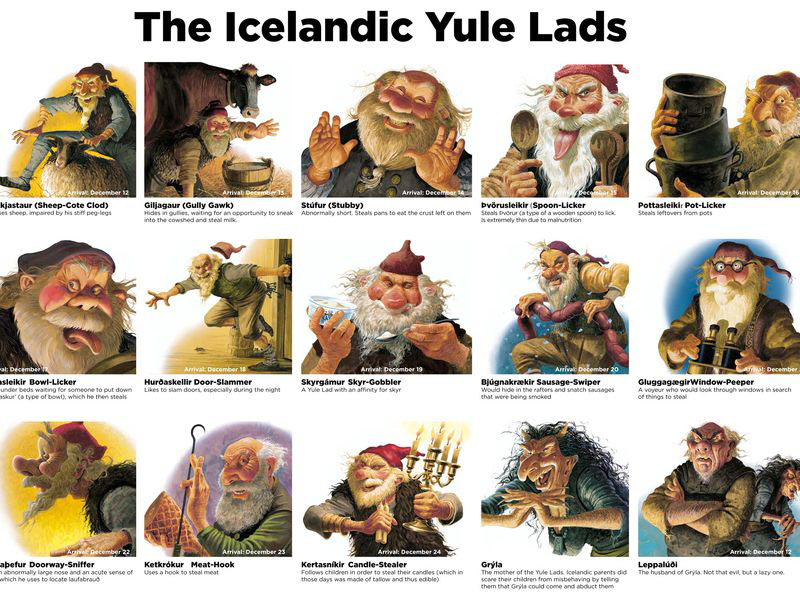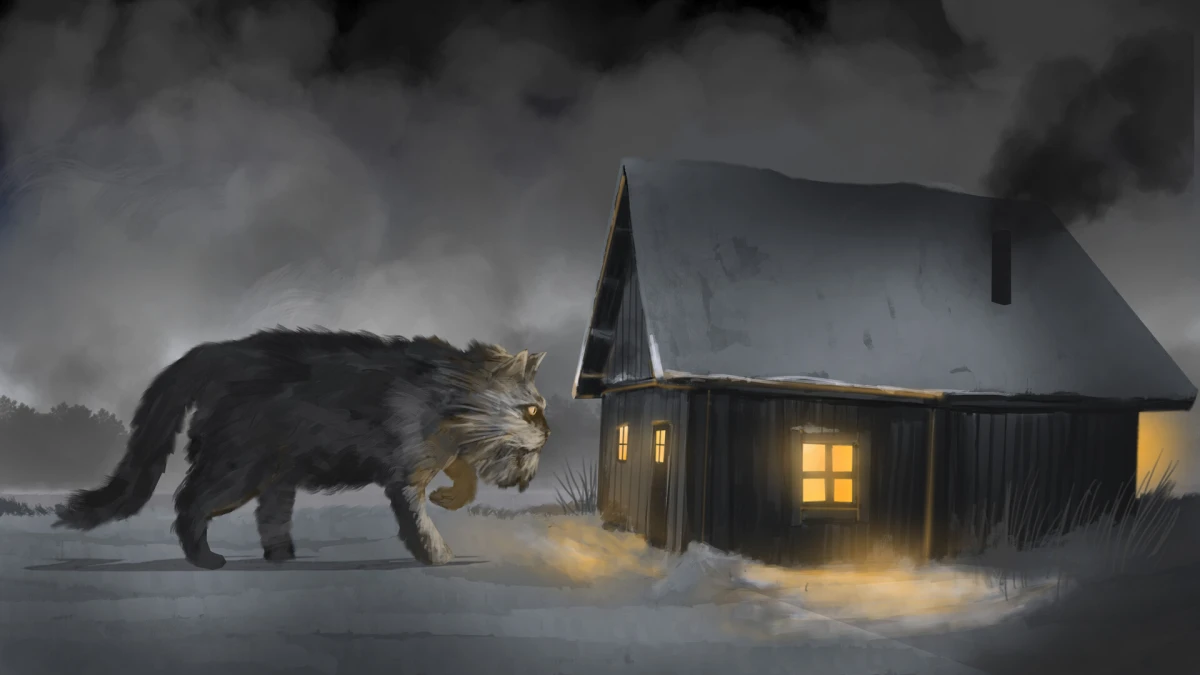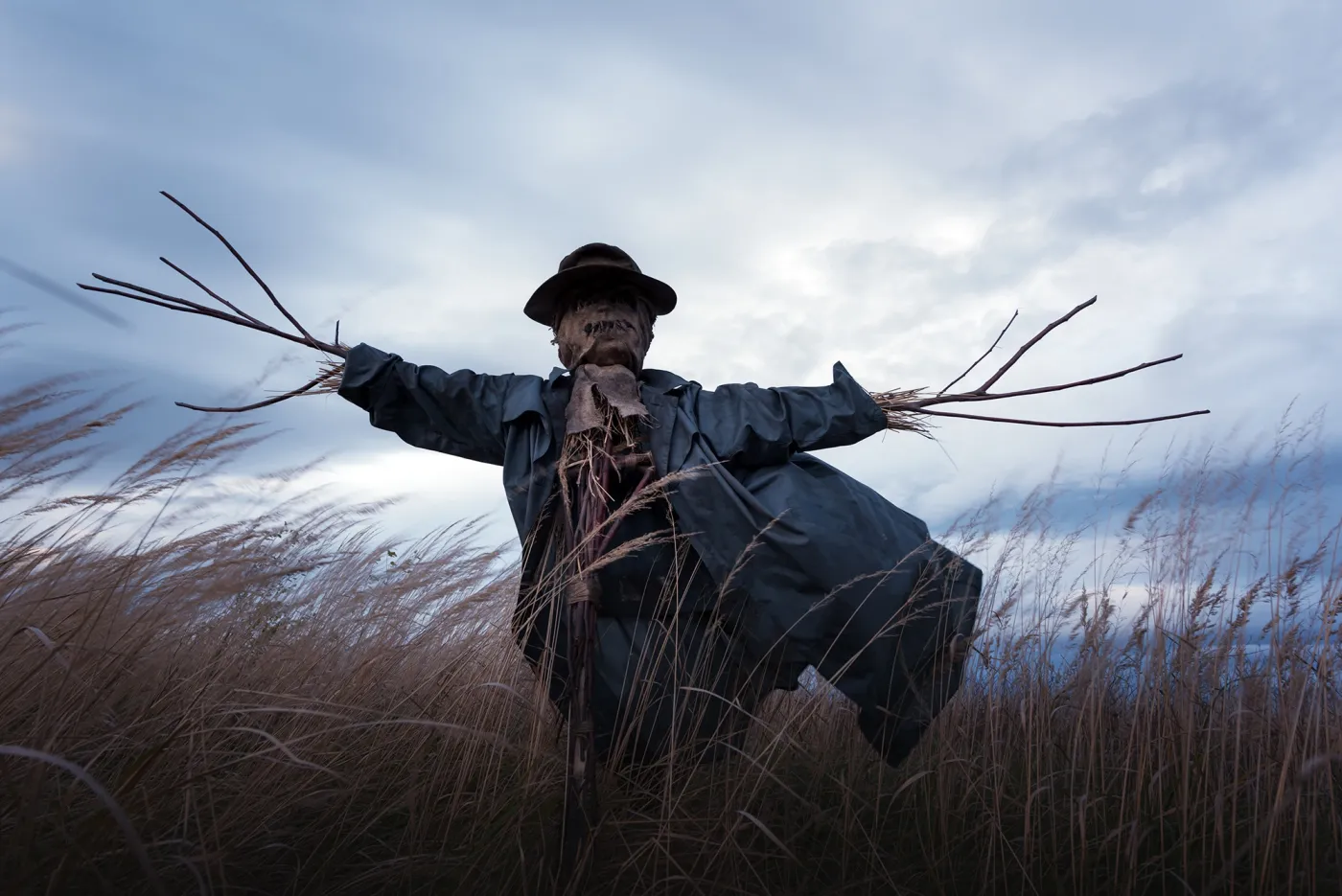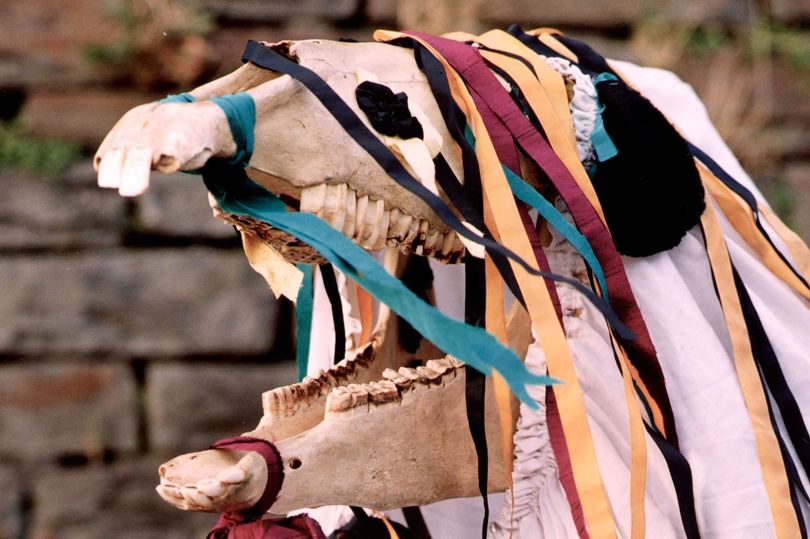From Krampus to Belsnickel, this terrifying list of Christmas creatures is sure to keep naughty children in line…
Christmas is a time of merriment and joy, with Santa Clause and Rudolph the Red-Nosed Reindeer leading traditional festive bedtime stories. The scariest characters usually include Scrooge with his ghost of Christmas past, or The Grinch with his hatred of Christmas time; although grumpy, these beloved baddies are always redeemable by the end of the tale.
Check out this list for some seriously spooky Christmas storytelling …
Krampus – Austrian & Central European
Starting our list strong with the iconic yule goat, Krampus. Austrian and German folklore describe him as a half-goat, half-demon, with a long tongue, large horns, thick dark hair and fangs. The name is derived from the German word for claw, Krampen.
In catholicism, St. Nicholas is recognised as the patron saint of children; he has long been associated with Christmas due to his saints day falling in early December. While many cultures celebrate this benevolent symbol of generosity, his existence opened the question of who might punish those who were bad. This is where Krampus comes in, he’s Santa’s evil counterpart on the hunt for naughty children.
Krampusnacht, or Krampus Night occurs on December 5. This is when Krampus comes to town, whipping bad children with birch sticks and chasing them through their homes. He is often depicted carrying chains and wearing a large basket on his back, the tools he uses to steal them away to his lair. St. Nicholas day is the next morning on December 6, good children will leave a shoe outside and wake up to it filled with sweets and presents, bad children will receive a rod.
In more modern times Krampuslauf takes centre stage across Austria, Germany, Hungary, Slovenia, and the Czech Republic. This is a night time ‘Krampus run’ in which hundreds of people take to the streets dressed as the demon, they whip the legs of children, steal hats and hand out Schnapps. This is a 500 year old tradition, although now more organised and toned down, it was previously a very raucous occasion with lots of drinking and anarchy.
Check out this video from TikTok user @im.baguette:
@im.baguette ! FAKE ! vi giuro sto piangendo dal ridere #perte #italy #krampus #viral #fyp ♬ original sound – bestspedup
2. The Yule Lads & Grýla – Icelandic
The 13 Yule lads are mischievous winter spirits from Icelandic folklore. Over time they have become a friendlier presence and similar in appearance to Santa Claus. However they have not always been this way!
Once depicted as evil spirits and trolls, the Yule lads originally represented the dark spirits of nature taking over as winter forced communities indoors and off the mountains. They are the 13 sons of Grýla, a children eating ogress symbolic of hunger and scarcity of food. They would come down to the towns and farms one by one, eventually covering the streets on Christmas eve, this was when the spirits of winter had fully reclaimed the land. They would then retreat one by one as the days become longer and winter begins to run it’s course.
There were previously as many as 82 yule lads who were far more cruel and punishing, however an 18th century royal decree about religious practice and domestic discipline banned parents from using horror stories and monsters to threaten their children. As such the stories became much tamer, leading to the far more generous and only slightly naughty characters present today.
Each Yule lad has a different name and visits across the 13 days leading up to Christmas. Names include Sausage Swiper, Spoon Licker and Door Sniffer; they are often associated with the theft of food and a hint at the legends origin, reminding people to watch their food supplies in the scarcity of the winter months.

Children will leave a shoe on the windowsill, similar to Saint Nicholas the yule lads also leave gifts and fill with sweets if they are good. However, if they are naughty they can expect rotting potatoes.
Père Fouettard / Father Whipper – French
According to legend Père Fouettard would accompany Santa Claus on his rounds, similar to Krampus he would punish those who had been bad with whippings and abduction. He is shown as an old man with a scraggly beard and dark robes, carrying long sticks ready to dole out beatings. Father Whipper is also said to have handed out lumps of coal instead of presents.
The truly disturbing part of this character is his gruesome origin story. He originally lived as a butcher in the 4th century, it is said he captured and murdered three young boys who knocked on his door searching for food in a famine.
One version of the tale states he drugged the children, slit their throats, chopped them up and threw them in a barrel of brine; he intended to further his profits by selling the children to his customers as meat. St. Nicholas discovers the scene and resurrects them, Père Fouettard must then spend the rest of his days as his assistant as punishment for his crimes.
PERE FOUETTARD: ‘Father Whipper’ can be found in parts of France, Belgium and Switzerland. Armed with a whip, he accompanies St Nicholas and punishes bad children. Some say he is the butcher who killed the 3 children that St Nicholas resurrected.#GothicAdvent pic.twitter.com/DaYQ9OE6iE
— Open Graves & Minds (@OGOMProject) December 8, 2022
In other versions of the story Père Fouttard is sorry for his crimes after seeing the miracle performed by St Nicholas and thankful he undid his horrific actions, in this version he chooses to follow him as an act of gratitude and remorse.
Frau Perchta – Austrian & German
Also known as the Percht or Berchta, the name Frau Perchta is believed to mean ‘the Bright One’. She is said to appear in two forms; either a beautiful lady with hair as white as snow, or a haggard old woman dressed in rags, wearing an iron beak. Many depictions show her carrying a cane or concealing a long, sharp knife.
Frau Perchta is known to wander the countryside throughout midwinter, entering homes between Christmas and epiphany (the 12 days of Christmas). She is the upholder of cultural taboos, in particular ensuring the prohibition of spinning wool or flax on holidays. If houses are kept clean and all spinning has been completed before Christmas day, children may find a silver coin left as a present.

However, there are many ways to displease this terrifying Christmas demon. If you forget to leave food out on Christmas eve, the house is unkempt or non traditional food is eaten on her feast day, she is known to slice open the child’s belly, rip out their innards and fill the hole with straw and pebbles. When they are discovered the parents will think they died in their sleep, nobody will know it was her.
Jólakötturinn / The Yule Cat – Iceland
Jólakötturinn belongs to Gryla, the ogress mother of the Yule lads. The Yule cat is described as giant, hunchbacked and vicious, with whiskers like razorblades, blazing eyes and terrible claws. She prowls through the town looking through children’s windows to see if they have received new clothes on Christmas eve.
If a child had received new clothes for Christmas, Jólakötturinn would move on to the next house and leave them alone. If they were seen without, she would first steal their Christmas dinner and then eat them.

This legend dates back to the 19th century, a time when many families relied heavily on wool production for work. Because of this, receiving clothes as a present would imply all the chores had been completed. Lazy children who did not help would get nothing and face the Yule cat’s wrath.
Belsnickel – German
Belsnickel is thought to be an amalgamation of Santa and Krampus, he ventures out on his own, offering both presents and punishment. He dresses in tattered clothes with layers of different furs, often he is shown wearing a scary mask with antlers and covered in foliage.
He makes an appearance after dark, making his presence known by tapping branches on the window. The front door would burst open and Belsnickel makes his entrance, with a gravelly voice and jerky movements he quizzes the children on their behaviour. If the children can answer the questions with confidence they are rewarded with cakes and nuts, if they cannot they are whipped with a charmed hazel branch.

Like many of these Christmas characters, there are earlier versions of Belsnickel’s legend which are darker, including stealing children off into the forest never to be seen again. Many stories do give children a chance to redeem themselves, they were made to dance, sing or recite a poem depending what he wanted to see, if they did well they were returned to their parents.
Hans Trapp – French & German
Of all our evil Christmas creatures, Hans Trapp is the only one based on a real person. Although the real Hans von Trotha never hurt children, he certainly caused enough havoc to be remembered through this festive legend. The ghost of Hans Trapp is said to appear disguised as a cloaked scarecrow.
The story goes that he was a cruel man of great wealth living in France, he was believed to have acquired his riches through dark magic and pacts with demons, as such he was excommunicated by the church, losing his property and all his money. The local villagers banished him into the woods in nearby Germany.

Driven mad by isolation and wanting revenge on the villagers, he hatched a plan to disguise himself as a scarecrow and steal a child to eat. He waited in a field until a young farm boy walked past, he stabbed him with a sharpened stick and brought him back to his lair to cook. Just as he was about to take his first bite he was struck by lightening and died.
His spirit rises from the dead every Christmas, abducting naughty children into the forest where they will never be seen again.
La Befana – Italian
La Befana is widely celebrated in Italian folklore and tradition, also known as the Christmas Witch. She is an elderly woman who flies on a broomstick giving out cookies and gifts to the good, and lumps of coal to the bad. Unlike similar characters on this list, she is not demonic or terrifying, she does however have a rather sad story.
In one version of the tale, La Befana loses her son when King Herod demands every baby boy be killed. She is driven mad by grief and upon hearing the news of Jesus’ birth she is convinced he is her child, she sets out to find him and gives him many gifts, in return Jesus makes her the mother of every child in Italy.

It is said that if anybody spots her she will thump them on the shoulder with her broom, this is because she doesn’t want to be seen.
Mari Lwyd – Welsh
Translating to ‘Grey Mare’, the Mari Lwyd is a welsh tradition in which a horse’s skull is mounted on to a stick with a white cloak, it is usually decorated with bells and ribbons; a person will hide underneath and operate the horse’s movements. The horse is accompanied by a group dressed as jesters or characters such as Punch and Judy.
In the countdown to Christmas the group will go from door to door trying to gain entry, this is done through a back and forth of rhyming verses or ‘pwnco’, continuing until one admits defeat. Once the group has gained entry they will cause mild mischief and be given sweets and treats.

Although a Christmas zombie horse sounds terrifying, they are usually harmless! It is very bad luck to turn them away as they banish all bad luck from the previous year.
Lussi – Norwegian
Today, St. Lucia’s day is celebrated across Norway and Sweden on December 13. This is a festival of light where parades of young women wear candlelit wreathes on their heads and dress in white. However, this night was previously known as Lussi’s night, Lussi was a demonic woman accompanied by demons and evil spirits.
A few centuries ago this date fell on the old Winter Solstice, a time when the veil between the living and spiritual world is said to be thinner. Lussi and her entourage of ghouls would fly over towns to see if the years work had been done, if not there would be consequences. Adults and children alike would ward off Lussi by painting crosses on the walls of their homes.
It was believed she would snatch children from their beds, smash chimneys, kill crops and livestock, or even kill those who were out of their beds at night.


